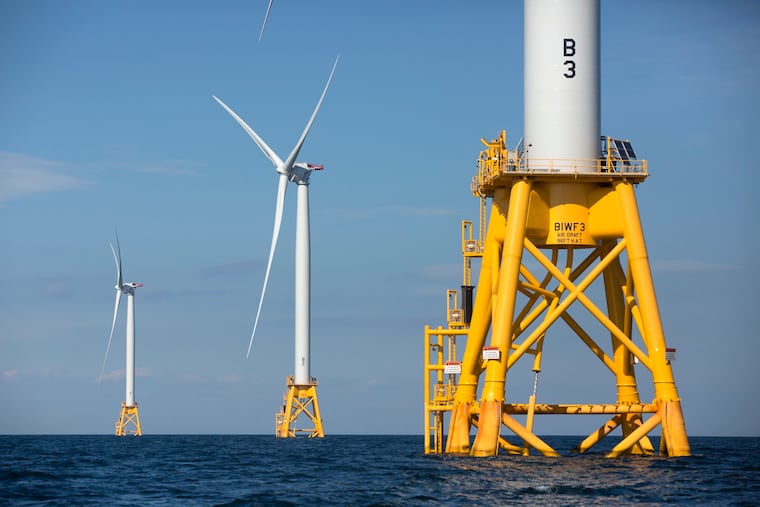PSEG, New Jersey’s largest energy provider, buys 25% stake in large offshore wind project
Public Service Enterprise Group (PSEG), New Jersey's largest energy provider, today announced it has agreed to buy 25% of the 1,100 megawatt Ocean Wind Project to be built off the Atlantic City coast

Public Service Enterprise Group (PSEG) announced Friday it is buying 25% of the 1,100 megawatt Ocean Wind Project to be built off the Atlantic City coast by Ørsted North America.
The two companies say the alliance will combine Ørsted’s expertise in wind with PSEG’s state and regional experience in the power market.
The announcement also comes on the heels of a PSEG announcement in July that it is exploring the sale of all its fossil fuel operations in New Jersey, Connecticut, New York, and Maryland, while retaining its nuclear power operations.
PSEG owns PSE&G, New Jersey’s largest publicly owned utility. Ørsted, based in Denmark, is a multinational company with projects around Europe and the U.S., including the Block Island Wind Farm off the coast of Rhode Island.
“We are pleased to expand our partnership with Ørsted, a global leader in the development of offshore wind,” PSEG chairman, president, and CEO Ralph Izzo said in a statement. “As New Jersey’s first offshore wind project, Ocean Wind will lead the way for a productive first step into this forward-leaning industry, bringing with it new skills, jobs, and carbon-free energy.”
PSEG did not release financial details of the transaction. The agreement needs approval by the New Jersey Board of Public Utilities.
David Hardy, CEO for Ørsted Offshore North America, said PSEG brings extensive knowledge of the local market and that the project will provide energy for 500,000 homes in New Jersey.
New Jersey’s Board of Public Utilities awarded the offshore wind project to Ørsted in 2019. It will be built in federal waters. It is expected to create 70 full time jobs and count toward meeting the state’s overall goal of having 3,500 MW of offshore wind by 2030. The state is looking to solicit a second wind project off the coast that could range from 1,200 MW to 2,400 MW.
The Ocean Wind project could start producing energy in 2024, though no firm date has been set.
Stefanie Brand, director for the New Jersey Division of Rate Counsel, which represents the interests of consumers of regulated utilities, said she sees no reason why rates for consumers would go higher because of the PSEG-Ørsted venture. She said that’s because the price of Offshore Wind Renewable Energy Certificates has already been set for the project.
Jeff Tittel, director of the New Jersey Sierra Club, said the PSEG-Ørsted deal demonstrates that “offshore wind is the future.”
“This is a major shift in how New Jersey’s largest utility will be getting its electricity going forward,” Tittel said. “Offshore wind is the most reliable and cost-effective way to reduce greenhouse and move forward on renewable energy.”
Michael Egenton, a vice president for the New Jersey Chamber of Commerce, said, “we’re on the record already as supporting Ørsted and their project off the coast,” and sees no reason why that would change.
“It’s not surprising” that PSEG joined with the wind project,” Egenton said, citing the company’s possible sale of its fossil fuel operations.
New Jersey, under Gov. Phil Murphy, has moved to become a big player in wind. The state plans a 200-acre “wind port” that could cost $300 million to $400 million and would be located in Salem County next to the Hope Creek nuclear plant, with the goal of aiding the state’s fledgling offshore wind industry.
Murphy said the New Jersey Wind Port, which he calls “a first-in-the-nation infrastructure investment,” will provide staging, assembly, and manufacturing activities related to offshore wind projects along the East Coast, not just New Jersey. It could potentially generate 1,500 jobs, officials said.
This article has been corrected to say the Ocean Wind project will create 70 full time jobs.